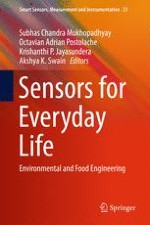2017 | Buch
Sensors for Everyday Life
Environmental and Food Engineering
herausgegeben von: Subhas Chandra Mukhopadhyay, Octavian Adrian Postolache, Krishanthi P. Jayasundera, Akshya K. Swain
Verlag: Springer International Publishing
Buchreihe : Smart Sensors, Measurement and Instrumentation
